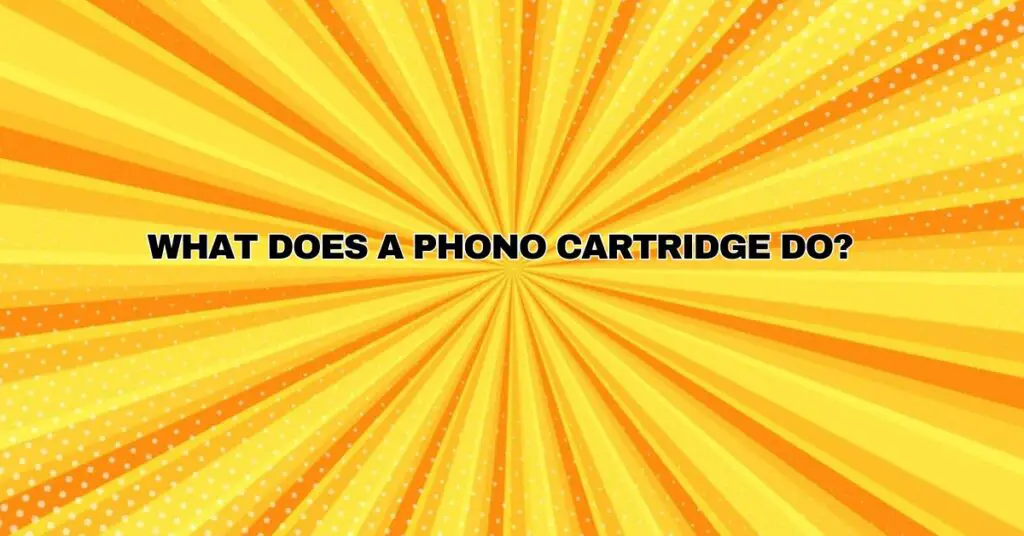In the realm of analog audio, where vinyl records are revered for their rich and warm sound, the phono cartridge is a humble yet indispensable component. This unassuming device, perched at the end of a turntable’s tonearm, holds the key to unlocking the melodies and harmonies etched into the grooves of vinyl records. In this comprehensive article, we will unravel the function and significance of a phono cartridge, shedding light on the vital role it plays in the art of vinyl playback.
The Phono Cartridge at a Glance
A phono cartridge, often referred to simply as a cartridge, is a miniature marvel of engineering designed to convert the physical contours of a vinyl record into an electrical signal that can be further amplified and ultimately transformed into the music we hear through our speakers.
Read Also : Best Phono Cartridges Under $5,000
The Anatomy of a Phono Cartridge
To understand the function of a phono cartridge, it’s essential to acquaint ourselves with its components:
- Stylus (Needle): At the heart of the phono cartridge is the stylus, a tiny and meticulously crafted needle, typically made of diamond or sapphire. This stylus serves as the point of contact with the vinyl record’s grooves, where it traces the undulating ridges.
- Cantilever: The stylus is mounted at the tip of a slender, flexible rod known as the cantilever. This cantilever acts as a bridge between the stylus and the cartridge’s internal components.
- Magnet or Coil: Within the cartridge, there is a magnet or a coil of wire. This element is intimately connected to the cantilever and stylus, creating a vital linkage. As the stylus navigates the grooves of a vinyl record, it imparts minute vibrations to the cantilever.
- Electromagnetic Induction: These vibrations are transmitted to the magnet or coil. In the case of moving magnet (MM) cartridges, the magnet moves, while in moving coil (MC) cartridges, the coil moves. This motion induces electrical currents within the coil, a phenomenon known as electromagnetic induction.
- Generation of Electrical Signals: The electrical currents generated during this process are direct analogs of the mechanical vibrations of the stylus as it traces the grooves. These electrical signals represent the sonic information encoded on the vinyl record, and they are extraordinarily subtle and weak.
- Output Terminals: These electrical signals are then conveyed to the turntable’s output terminals. In the case of MM cartridges, these signals are relatively stronger, while MC cartridges generate more delicate signals.
The Role of a Phono Preamp
At this point, the electrical signals produced by the phono cartridge are too faint to drive amplifiers and speakers effectively. This is where a phono preamplifier, commonly known as a phono stage, comes into play. The phono preamp boosts and equalizes the signals, making them suitable for further amplification and, ultimately, for the speakers to produce audible sound.
Significance of the Phono Cartridge
The phono cartridge is a linchpin in the vinyl playback chain, serving as the critical interface between the physical world of vinyl records and the realm of electrical audio. Its importance can be summarized as follows:
- Signal Conversion: The cartridge’s primary function is to convert the mechanical vibrations of the stylus into electrical signals, effectively translating the grooves of a vinyl record into an electric language.
- Accuracy and Fidelity: A high-quality phono cartridge is pivotal for accurate sound reproduction and fidelity to the original recording. It plays a decisive role in capturing the nuances and subtleties of the music.
- Tonal Character: Different cartridges possess unique tonal characteristics. Audiophiles often select cartridges that align with their musical preferences, whether they seek warmth, neutrality, or a specific sound signature.
- Compatibility: Phono cartridges are available in MM and MC variants, each with its own characteristics and demands. It is essential to choose a cartridge that is compatible with the phono stage and tonearm of your turntable.
Conclusion
The phono cartridge, a diminutive yet formidable device, stands as the gatekeeper to the captivating world of vinyl audio. With its stylus as the point of contact and electromagnetic wizardry hidden within, it converts the physical beauty of vinyl grooves into the ethereal realm of music. Whether you’re a vinyl enthusiast or simply curious about the magic of analog audio, the phono cartridge’s function and significance are central to appreciating the nuances, warmth, and timeless charm of vinyl playback.


